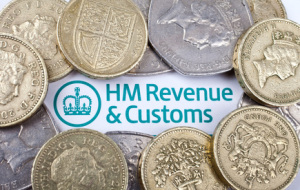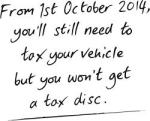This blog applies to any of you that have at least one employee on PAYE. Please note all my clients are classed as Small or Micro Entities.
You may have seen the adverts stating ‘We’re all in’. Over the last few years large and medium companies have had to deal with the government’s new Work Place Pension scheme which is often referred to as ‘Auto Enrolment’. This has been a relatively small amount of companies and small amount of pension schemes holding a large number of employee pensions. These companies have had the resources to source good schemes with reputable providers for their staff pensions.
However, in 2016 & 2017 all small and micro employers are expected to do the same. This will involve 100,000s of pension schemes holding a very small amount of employee pensions and because of this, most of the main pension scheme providers are already saying they will not deal with Auto Enrolment for small and micro entities as the administrative costs will be too high.
So here are a few of the key points to try and make things a little clearer and forewarn you of things to come.
Staging Date If you have employees on PAYE you will be receiving a staging date which will be sometime in 2016 or 2017. This is the date you must start deducting and paying pensions for all applicable staff so you must have a pension scheme and the ability to deal with this in place by that date.
I have the staging dates for all clients who I run payroll for and will be contacting each of you individually regarding this.
For those who run their own payroll you can access your staging date at http://www.tpr.gov.uk
Director only employees If you trade as a Limited Company and only have the director(s) (up to 5 directors) as employees, you do not need to set up a pension scheme. You will still receive all the standard letters from HMRC and Auto Enrolment will still apply unless you submit an exemption email. There is a little admin involved and this will have to be re-done every 3 years.
For all clients I run payroll for, that have only Directors on the payroll, I have the email address and a template of the information that is required for the exemption and will be able to submit this on your behalf. I will contact each of you individually as you approach your staging dates.
For other Limited companies that this applies to, please contact me if you would like the email address and template. A small charge will apply or I have a contact who will do this for you for £135 + VAT and give you a certificate of compliance when done.
Note, if you take on an employee you will only have 6 weeks to organise a pension scheme and auto enrolment for that employee before getting a fine.
Who this applies to If you have at least one eligible member of staff on PAYE you will need to have a pension scheme in place even if they have already stated they do not want to pay into it. The employees have to be auto enrolled into the scheme before they can ‘opt out’, (although see ‘Postponement’ below as this can help here). Please note they then only have 4 weeks to opt out and claim back the money that has been deducted from their pay automatically and this has to be done with very specific documents going back and forth to the pension provider.
Postponement You can postpone enrolling staff onto the pension for up to 3 months. This can help if you have temporary staff who you know will leave within 3 months or staff who wish to opt out. You can only postpone an employee once.
Eligible Staff There are 3 tiers of staff:
- Those between age 22 to state pension age and who earn more than £10,000. These staff will have to be automatically enrolled but they can opt out.
- Those between 16 to 74 who earn between £5,772 to £10,000 and those between 16-21 and pension age to 74 who earn over £10,000. These staff do not qualify for auto enrolment but can request to ‘opt in’ and you then have to pay their employer contribution.
- Those who earn less than £5772. These staff are not auto enrolled but can request to ‘opt in’ but you do not have to pay the employer contribution.
Just to add some further complication, the amounts stated need to be divided by 12 for the monthly pay ie £10,000/12 = £833.33. If you have an employee in category 2 who one month does some overtime so their pay goes over £833.33 they will get automatically enrolled and employee pension contribution deducted, employer contribution paid. If they still do not want to be enrolled they will then need to opt out and claim back the money.
All employees who have opted out will be automatically re-enrolled every 3 years and will need to opt out again.
You are not allowed to force or even advise employees to opt out, this can result in a custodial sentence.
Contributions The minimum levels of contributions are being phased in and are calculated as a percentage of pay between £5772 and £41895 and are currently as follows:
To 30 Sept 2017 total contribution of 2% with employer paying 1%, employee paying 1%
1/10/17 to 30/9/18 total contribution of 5% with employer paying 2%, employee paying 3%
1/10//18 onwards total contribution of 8% with employer paying 3%, employee paying 5%
Pension Scheme Providers As previously stated the main pension providers will not handle this for small and micro entities but there are 3 main trust providers. These are Nest, Now and Peoples Pension. I will focus on Nest as it is the only one which is wholly government backed and was set up to deal with Auto Enrolment for small businesses although some large companies such as M&S and BT are also using this. It is owned by the Indian company Tata.
It is predicted that with 100,000s of schemes coming online with tiny pension contributions (there is one month in 2016 that has 130,000 businesses staging dates), the system will possibly go into meltdown with the huge administrative burden, so who knows what kind of return on investment this pension will give but it’s free to the employer and there to help you be compliant. They charge the employee 1.8% of contributions paid in.
You can check out the website for further details http://www.nestpensions.org.uk
The way forward In the first instance you need to know your staging date and nominate a contact person for all correspondence to be sent to. Do this at http://www.tpr.gov.uk . If you have a director only payroll, apply for the exemption. If you need to comply, a pension scheme needs to be set up. For clients whose payroll I run, I will be contacting you individually to discuss how to proceed. For those who run their payroll through a payroll bureau, you will need to contact them to make sure they have an action plan for you to meet the deadlines. For those who run their payroll themselves please contact me to discuss how to proceed.
I also have a contact who can set up, educate and make you fully compliant for £295+vat. This does not include the ongoing processing of payroll and Auto Enrolment. All costs will increase the nearer ‘crunch time’ approaches as all companies dealing with this are expected to become over subscribed.
Ongoing this does add a significant administrative burden to the payroll and all payroll costs will increase. I would advise anyone with employees on weekly pay to transfer them to monthly pay before your staging date as dealing with this 52 times per year is a lot of extra work. There is a lot of correspondence required between the employer, the pension provider and the employee. Failure to provide the required correspondence can mean non compliance fines will apply. Payroll software which is AE compliant is essential but at the moment free packages such HMRC Basic Tools are not compliant. Some packages such as Moneysoft are compliant to process the numbers but do not automatically run and submit the correspondence required. Brightpay is fully compliant as is Sage but the AE bolt on can be expensive.
Failure to comply Current fines are £400 then £50 per day.
I hope this has cleared up some of the queries and no doubt thrown up some more.
All figures are based on the current 2014/15 rates.
































